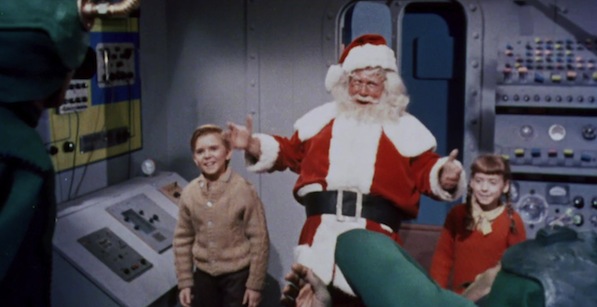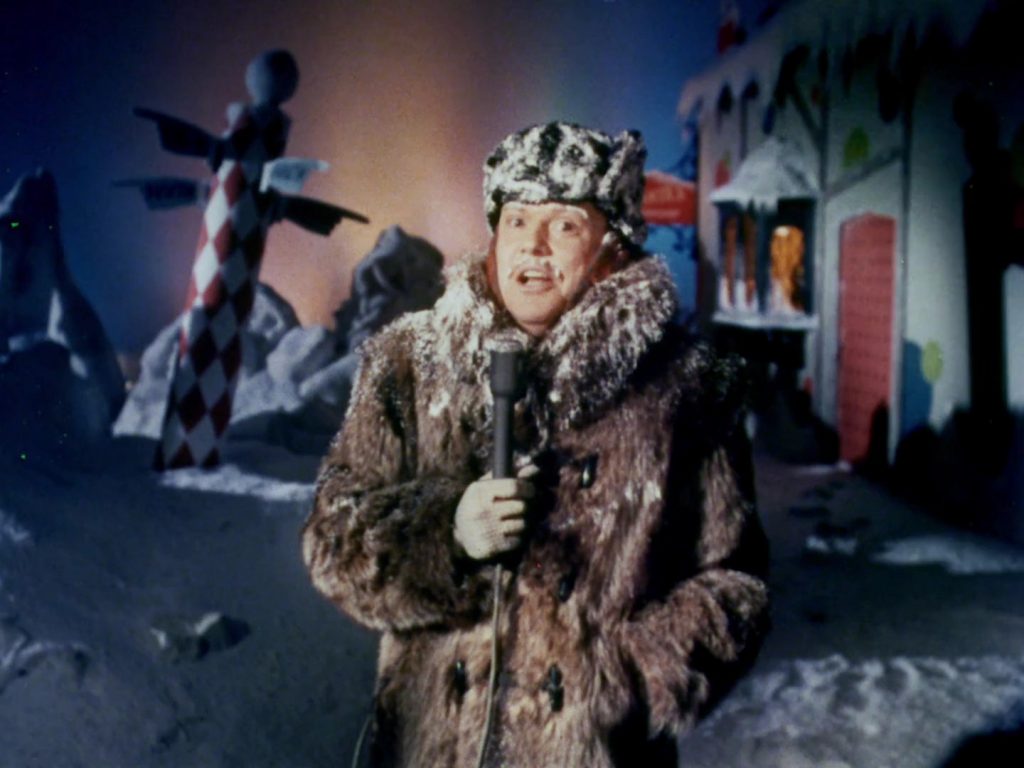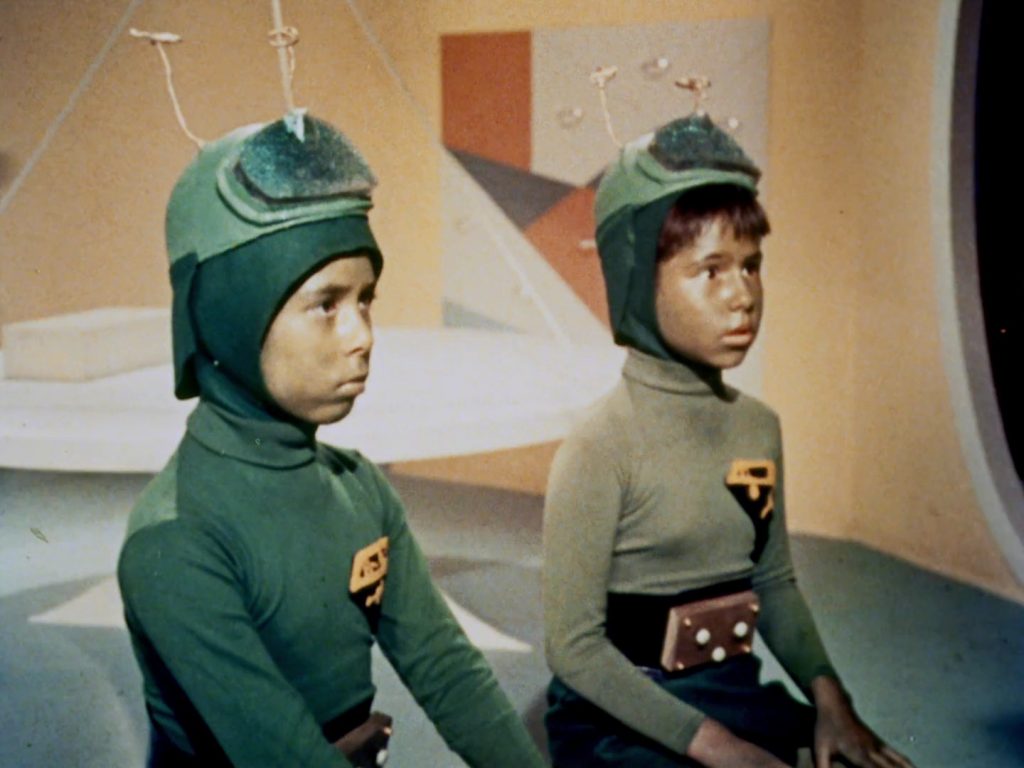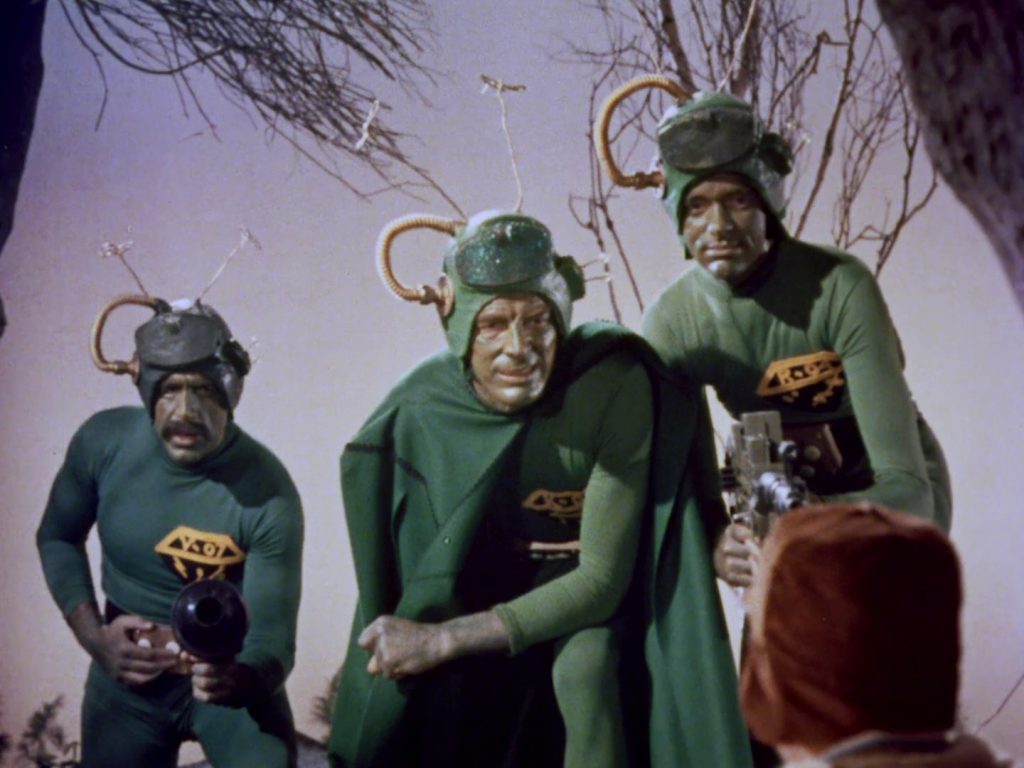If Americans of fifty years ago could see us now, they’d be disappointed—for many reasons, no doubt. But primarily because we’re all still here, as opposed to, you know, living on the moon, or Mars or beyond.
Back then, no idea was more vivid in the popular imagination, more omnipresent in pop culture, or looked more assuredly like The Future than space travel. In spring of 1961 both the U.S.S.R. and the U.S.A. put men (briefly) in space, less than a half-century after the Wright Brothers had given mankind flight closer to terra firma. The Soviets’ early supremacy in the “space race” both thrilled and alarmed Westerners. Occurring at the height of the Cold War, that trailblazing surely put pedal to the medal in NASA’s programs, resulting in Americans walking on the moon before the decade was over.
That mixed excitement and anxiety—what if the Russkies colonized outer space before we did?!?—fueled a great deal of speculative fiction in the late fifties and early sixties, some serious, some very silly. Arguably defining the latter was Santa Claus Conquers the Martians, a Pathecolor spectacular from the ominously named Jalor Productions (never heard from before or since) that was unleashed upon an unsuspecting and somewhat flabbergasted public in 1964.
Its theatrical release via Embassy Pictures (a now-defunct distributor whose later films included everything from The Graduate and Fanny and Alexander to Zapped!) made minor inroads on the kiddie-matinee circuit. But the relatively low backlog of Christmas-themed movies and TV specials at the time meant that it very quickly became a broadcast staple. And the fact that its copyright owners allowed it to drift into the public domain insured this oddity never quite disappeared from sight, expediting its embrace as one of the most widely agreed-upon “Worst Movies Ever.” With no royalties to pay, it was re-issued by umpteen VHS (then DVD) companies; it became one of the most popular films skewered on Mystery Science Theater 3000 (and more recently, by its spinoff RiffTrax).
Yet still, the low-budget independent feature confounds first-time viewers. No wonder: This movie is ALL about two things that obsessed Americans in 1963 (at least until JFK was assassinated at year’s end): Outer space, and Commies. What’s it about, exactly? OK, you asked for it:
Martian siblings Bomar and Girmar happen to see an Earth news report on this year’s seasonal gift-making progress at Santa’s Workshop. They are riveted by it—because they, like all Martian kids, lead a pretty joyless life. They’re drugged to sleep each night, “eat” pills rather than actual food, and don’t know how to play, or what toys are.
Disturbed by the impact this glimpse of what they’re missing has had on the Red Planet’s youth, and told by an ancient sage “They must learn what it means to have fun!” Martian elders decide the solution is traveling to our planet in order to kidnap Santa. But first they have to find him—which they do, after asking his whereabouts from two Earth children whom they also kidnap. After some intrigue on the return rocket trip to Mars caused by bad Martian Voldar—who wants to kill the human visitors, or maybe just everybody—the Earth kids meet their counterparts. Santa duly makes everyone happy, leaving behind a newly appointed Martian “Santa” to fulfill his duties so the real one can get back home in time for Xmas. Cue reprise of the truly heinous opening-credits theme song “Hooray for Santy Claus,” this time complete with onscreen lyrics so we can all sing along.
It was very easy for viewers in 1964—probably even kids—to grok the political allegory very thinly buried beneath the family-friendly fantasy here. While their skin may be green, the Martians are all “red,” being a cartoonish version of the then-current popular Communist stereotype of humorless, near-robotic ideologues who frown on all free (let alone fun) thought, and whose emotions run a narrow gamut from the mean to the miserable. That image was plentiful in entertainment of the era, including both flat-out propaganda (the notorious Jack Webb-narrated 1962 short Red Nightmare, in which Everytown, U.S.A., is brought to its knees by Commie invaders) and scarcely more subtle escapism (1952’s sci-fi Red Planet Mars). Even the early James Bond movies traded on Cold War notions of Socialist soullessness in a succession of cold, sadistic Eastern Bloc villains.
Aimed at grade schoolers, Santa Claus Conquers the Martians was a particularly bizarre manifestation of such thinking. One suspects the filmmakers were simply cobbling together as many then-trendy, salable ideas as they could within a very limited ($200,000) budget—including the “rock ‘n’ roll” instrumentation of that awful theme song, which sports a beat perfect for dancing The Twist. Not a great deal is known about the film’s production; most of its talent was recruited from the New York stage world, though for director Nicholas Webster it was a rare big-screen project in a career mostly devoted to TV projects. A movie apparently without a single natural-exterior shot (save some Air Force stock footage that was also used in Kubrick’s Dr. Strangelove the same year), it was primarily shot in a disused Long Island aircraft hangar. The cheap sets were augmented by real-world toys (a Slinky, Whammo Air Blasters as Martian ray-guns), and the FX were seldom more “special” than evil Voldar somehow being defeated by blown soap bubbles. But then, tackiness has always been key element to Conquers‘ charm. (As well as cornball dialogue like “Wowee-wow!”—what, you thought Borat made that up?)
While no doubt many originally thought this movie would fast disappear into the obscurity it came from, instead Santa/Martians has only grown more famous over what’s now a fifty-year lifespan. It was partly buoyed by the curiosity value of one future “star” in the cast—playing stonefaced little greenie Girmar was Pia Zadora, already a Broadway veteran at age ten. Some years later she met and married the much older Israeli businessman Meshulam Riklis, a junk bond pioneer who dedicatedly used his considerable fortune to make his new wife world-famous. They purchased the fabled Beverly Hills home of silent film legends Mary Pickford and Douglas Fairbanks (but razed it to built something bigger), and he had a hand in financing several feature film vehicles which all flopped miserably. Though her big, brassy singing voice led to some success as a recording artist, Zadora remained mostly known as an infamous showbiz misfire—the perfect career epilogue to Martians.
Remarkably, however, the movie has not just endured, it has inspired homages and spinoffs. There have been two stage adaptations to date, a satirical novelization was published in 2005, and a couple years ago prolific Z-moviemaker Jim Wynorski (Chopping Mall, Piranhaconda) announced production of a remake—though nothing has come of that since. With Hollywood’s bottomless current thirst for do-overs of “classic” films (meaning pretty much any movie that anybody still remembers), it’s not impossible that one day an expensive, starry, CGI-laden makeover of 1964’s worst cinematic idea may find itself at a multiplex near you. Hooray!
For another view on Santa Claus Conquers the Martians, see Take II.








